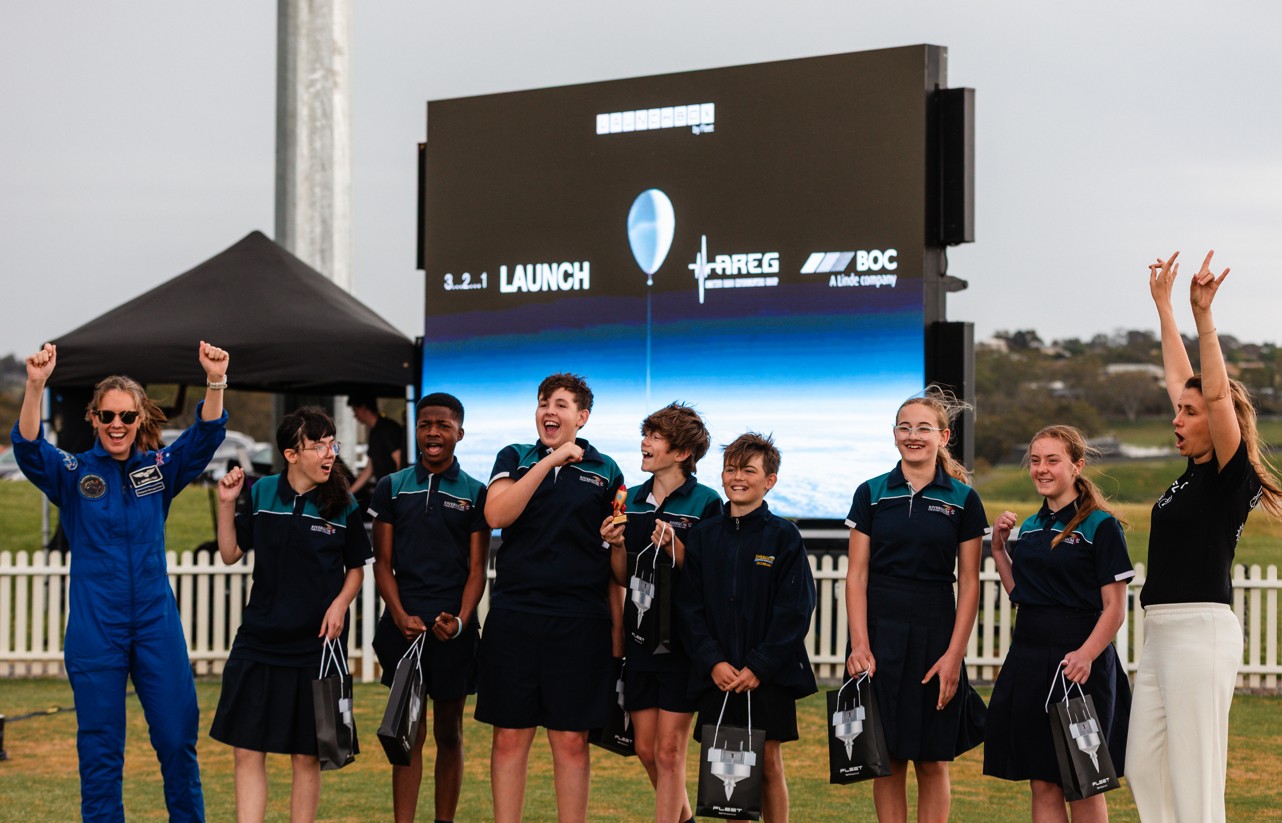We’re Going to the Moon! Fleet Space Awarded A$4M Demonstrator Program Contract to Harness Seismic Data at Moon’s South Pole

“Fleet’s mission is to connect the Earth, Moon and Mars. First, we accomplished a groundbreaking feat by introducing ExoSphere by Fleet®, which revolutionised the exploration of crucial minerals on our home planet through the utilisation of geophysical devices connected to satellites, enabling rapid mapping of the subsurface.
With this significant contract from the Australian Space Agency, we are poised to be the first Australian technology to touch down on the surface of the Moon, supporting humanity's efforts towards colonisation and aligning with NASA's Artemis program, with a future vision of Martian exploration supporting the hunt for life beyond our planet.”
Matthew Pearson, Chief Exploration Officer and Co-Founder, Fleet Space Technologies
“The projects being supported show just some of the many ways that space technologies are improving how we live and how we work. By helping Australian organisations like Fleet to develop their space heritage, they can break into new markets and supply chains, and take their innovative Aussie technology to the world. That will help them to grow, keep their ideas in Australia and generate more employment opportunities here.”
Enrico Palermo, Head of the Australian Space Agency
Being Awarded a $4M Contract for the Moon to Mars: Demonstrator Program
Leading Australian space exploration firm Fleet Space Technologies has been awarded a $4m contract with the Australian Space Agency for its Moon to Mars: Demonstrator program.
Building on their terrestrial success in deploying direct-to-satellite seismic arrays that find the critical minerals needed for the energy transition, Fleet is now venturing into the celestial realm, harnessing this capability to create a device tailored for Lunar and Martian exploration.
This remarkable endeavour is being facilitated by the Australian Space Agency, financing the demonstration mission on a Commercial Lunar Payload Services delivery. This will be the first step of 7 Sisters, an Australian mission to explore the Moon and Mars for the benefit of all humankind.
Fleet Space Technologies Transforms Lunar Exploration
Fleet Space has been chosen for the project Seismic Payload for Interplanetary Discovery, Exploration and Research (SPIDER). The grant contract will assist Fleet Space to build the geophysical devices to enable resource exploration for future human habitation as part of a Government initiative to back a series of local space innovations, including those that can help address climate change.
In a significant advancement for lunar exploration, the SPIDER, a three-component seismic station, is set to be deployed on the surface of the Moon’s South Pole. Designed to record continuous seismic data for up to 14 days, the device will be launched aboard a commercial lander. This achievement will showcase the potential for developing compact geophysical instruments and revolutionise future lunar and Martian exploration missions.
This seismic station is supported by an incredible consortium of partners from industry, government and academia across Australia. DUGTechnology, Adelaide University, Titomic, the Department of Education SA, and esteemed researchers from the Australian National University, Professor Hrvoje Tkalčić, and from the University of Tasmania, Prof. Dr. Anya M. Reading.
Fleet Space’s proposal was among 10 projects selected to share in $40m under the Demonstrator Program of the Moon to Mars initiative. The funding is designed to assist companies to get their technologies ready for space.
Fleet’s Chief Exploration Officer and Co-Founder Matthew Pearson said the contract would help the company to continue to pursue innovative ways of improving the space industry: “The successful delivery of this project will demonstrate the ability to produce geophysical devices for future lunar and Martian geophysical exploration missions”.
“Fleet is currently deploying several direct to satellite seismic arrays and intends to leverage this Earth capability into a device suitable for lunar and Martian environments. The solution is non-invasive and super scalable and can potentially be mounted to mini rovers for future missions.
“The Demonstrator Mission Grant aligns perfectly with Fleet’s belief that space enables us to achieve new things to deliver positive outcomes right here on earth. We are explorers with a mission to revolutionise mineral exploration from Earth to the Moon and Mars. Fleet’s world leading technology is locating minerals that are critical to the future of humanity.”
Fleet Space’s Commitment to the Australian and Global Space Industry
This contract follows the announcement in May 2023 that Fleet Space Technologies had successfully completed its heavily oversubscribed Series C fundraising round, raising a total of A$50 million. The substantial amount more than doubled the company's valuation, now surpassing A$350 million.
The funding round followed the company's outstanding success in commercialising its revolutionary ExoSphere by Fleet® satellite-based mineral exploration technology worldwide. Fleet is committed to expanding its highly skilled workforce in Australia and around the world, creating a genuine legacy for Australia and the wider global space industry.
Fleet Space Technologies has also recently secured a contract with Australia’s Defence Space Command, which will see its commercial satellites used to develop and demonstrate a Low Earth Orbit (LEO) satellite communications system.


